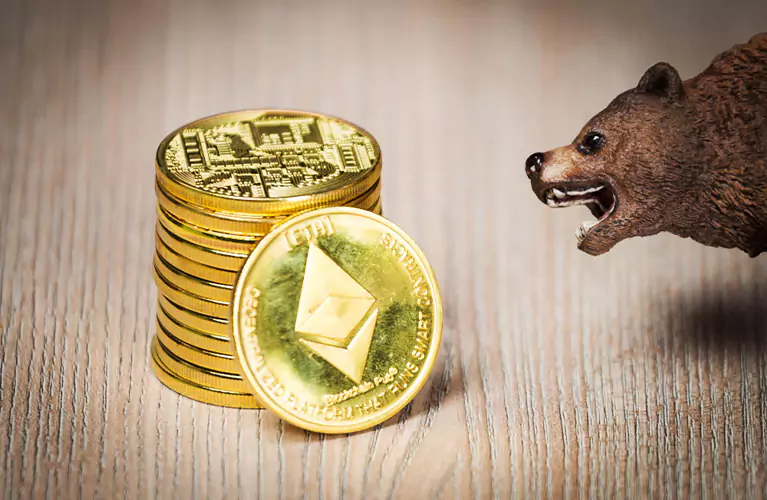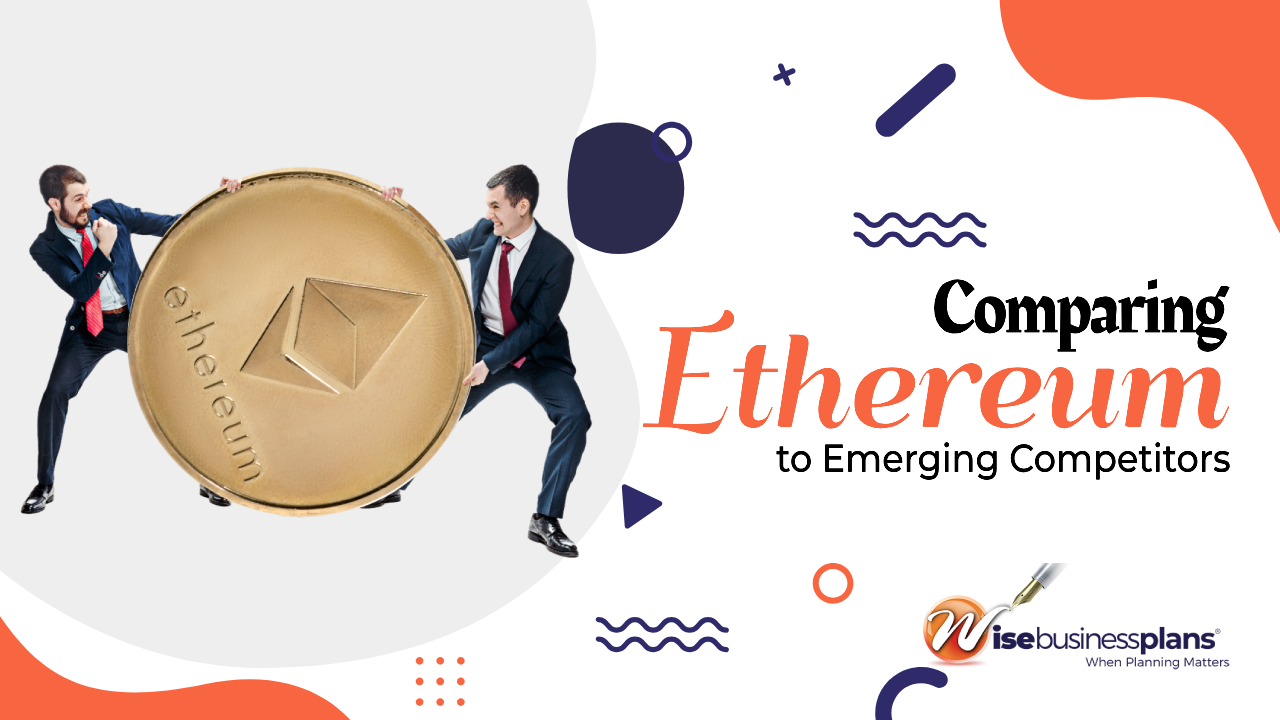Comparing Ethereum to Emerging Competitors
Table of Contents
- The Role of ETH USDT Price Predictions
- Ethereum’s Strengths and Weaknesses
- Strengths:
- Weaknesses:
- Emerging Competitors: A Closer Look
- Solana
- Key Features of Solana
- Polkadot
- Key Features of Polkadot
- Avalanche
- Key Features of Avalanche
- How Ethereum 2.0 Seeks to Compete
- The Importance of Understanding Blockchain Ecosystems for Business Planning
- Conclusion: Ethereum’s Path Forward
Ethereum has been a pioneering force in the blockchain space, enabling decentralized applications (dApps) and smart contracts. Its open-source platform has fostered the development of decentralized finance (DeFi), non-fungible tokens (NFTs), and countless other innovations. However, as the blockchain landscape evolves, Ethereum faces growing competition from newer platforms that offer improved scalability, lower transaction fees, and alternative consensus mechanisms.
The Role of ETH USDT Price Predictions
For investors and developers, keeping track of Ethereum’s future price movements is crucial, and ETH USDT price prediction serves as a valuable tool in this regard. Predicting Ethereum’s price in relation to USDT (Tether), a stablecoin pegged to the U.S. dollar, helps investors gain insights into potential market trends. These predictions play a critical role in guiding investment decisions and offering foresight into possible market fluctuations, helping stakeholders optimize their strategies in the ever-changing cryptocurrency landscape.
Ethereum’s Strengths and Weaknesses

As Ethereum continues to evolve, it maintains several strengths but also faces notable challenges. Understanding its strengths and weaknesses in comparison to emerging competitors is essential for assessing its long-term viability.
Strengths:
- First-mover advantage: Ethereum’s early entry into the blockchain market has allowed it to build a vast ecosystem of developers, users, and decentralized applications.
- Smart contract capabilities: Ethereum was the first platform to introduce smart contracts, allowing automated agreements to execute without intermediaries.
- Vibrant ecosystem: Ethereum’s ecosystem supports a wide array of applications, including DeFi, NFTs, and decentralized autonomous organizations (DAOs).
Weaknesses:
- Scalability issues: Ethereum’s current network can handle about 30 transactions per second (TPS), far fewer than its competitors, leading to congestion and higher fees during peak times.
- High gas fees: Ethereum users face high transaction fees, also known as gas fees, especially when the network is under heavy load.
- Energy consumption: Ethereum’s proof-of-work (PoW) consensus mechanism is energy-intensive, though Ethereum 2.0 aims to address this with proof-of-stake (PoS).
Emerging Competitors: A Closer Look
Several blockchain platforms have emerged as strong competitors to Ethereum, offering solutions to some of its most significant challenges. These platforms are the forefront of cryptocurrency innovation, focusing on scalability, lower fees, and innovative consensus mechanisms.
Solana
Solana is one of the most prominent competitors to Ethereum, particularly in terms of scalability and speed. Using a unique consensus mechanism called Proof of History (PoH), Solana can process over 65,000 transactions per second (TPS), significantly outperforming Ethereum.
Key Features of Solana
- Low transaction costs: Solana’s low fees are a significant advantage over Ethereum, where high gas fees can deter users.
- Developer-friendly environment: Solana has quickly built a robust ecosystem with tools and resources that support developers.
Polkadot
Polkadot is another emerging platform that competes with Ethereum by offering improved scalability and interoperability. Its key innovation is its use of parachains, which are parallel blockchains that interact with the main Polkadot chain.
Key Features of Polkadot
- Interoperability: Polkadot allows different blockchains to communicate and share data, creating a more interconnected blockchain ecosystem.
- Scalability: Polkadot’s architecture allows for high throughput, making it scalable enough to support large dApps.
Avalanche
Avalanche offers a fast, scalable, and secure blockchain platform that addresses Ethereum’s limitations. Its consensus protocol enables quick finality, allowing transactions to be confirmed in under a second.
Key Features of Avalanche
- Subnets: Avalanche allows users to create custom blockchains called subnets, enabling developers to build applications that meet their specific needs.
- Energy efficiency: Avalanche’s consensus protocol is highly efficient, reducing the energy consumption typically associated with proof-of-work systems.
- Low fees: The platform’s low transaction fees make it more cost-effective for developers and users compared to Ethereum.
How Ethereum 2.0 Seeks to Compete
Ethereum’s response to these emerging competitors is Ethereum 2.0, an upgrade designed to improve the platform’s scalability, security, and energy efficiency. The shift from proof-of-work (PoW) to proof-of-stake (PoS) is at the heart of this transformation, significantly reducing Ethereum’s environmental impact and increasing its transaction throughput. Key goals of Ethereum 2.0 include:
- Improved scalability: Ethereum 2.0 aims to process up to 100,000 TPS through sharding, which breaks the network into smaller chains that process transactions in parallel.
- Lower gas fees: With increased scalability, Ethereum 2.0 is expected to lower gas fees, making the network more accessible to a broader user base.
- Environmental sustainability: The transition to PoS will reduce Ethereum’s energy consumption by approximately 99.95%, making it more eco-friendly.
Explore blockchain-focused sample business plans to understand market positioning.
The Importance of Understanding Blockchain Ecosystems for Business Planning

As blockchain technology continues to advance, understanding the competitive landscape becomes increasingly vital for entrepreneurs and investors. Knowledge of platforms like Ethereum, Solana, Polkadot, and Avalanche can inform critical business decisions. Here are a few ways this understanding can aid in effective business planning:
- Identifying Opportunities: By recognizing the strengths and weaknesses of various platforms, businesses can identify gaps in the market and explore opportunities for innovation, allowing for the development of solutions that meet unmet needs.
- Strategic Investment Decisions: Awareness of price predictions and market trends, such as ETH USDT forecasts, enables stakeholders to make informed investment choices, optimizing their financial strategies in a dynamic environment.
- Tailoring Business Models: Understanding the features of different blockchain platforms allows businesses to tailor their models and technology choices according to the specific advantages that best suit their operational needs and target audience.
Conclusion: Ethereum’s Path Forward
Ethereum remains a foundational blockchain platform, but it faces increasing competition from faster, cheaper, and more scalable alternatives. Platforms like Solana, Polkadot, and Avalanche offer solutions to some of Ethereum’s current limitations, such as scalability and high fees. However, with the launch of Ethereum 2.0, the platform aims to address these issues and retain its leadership in the decentralized ecosystem.
















